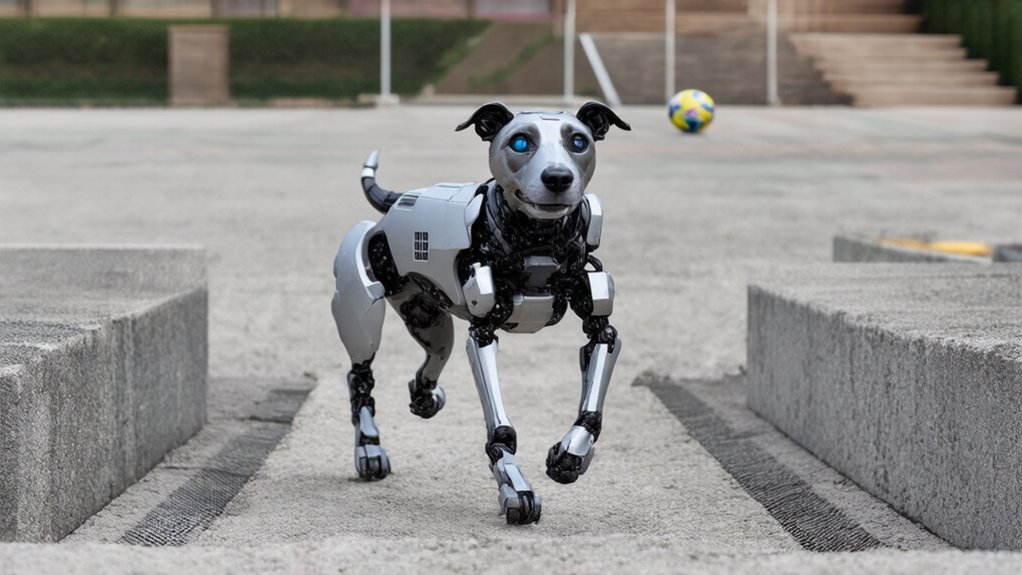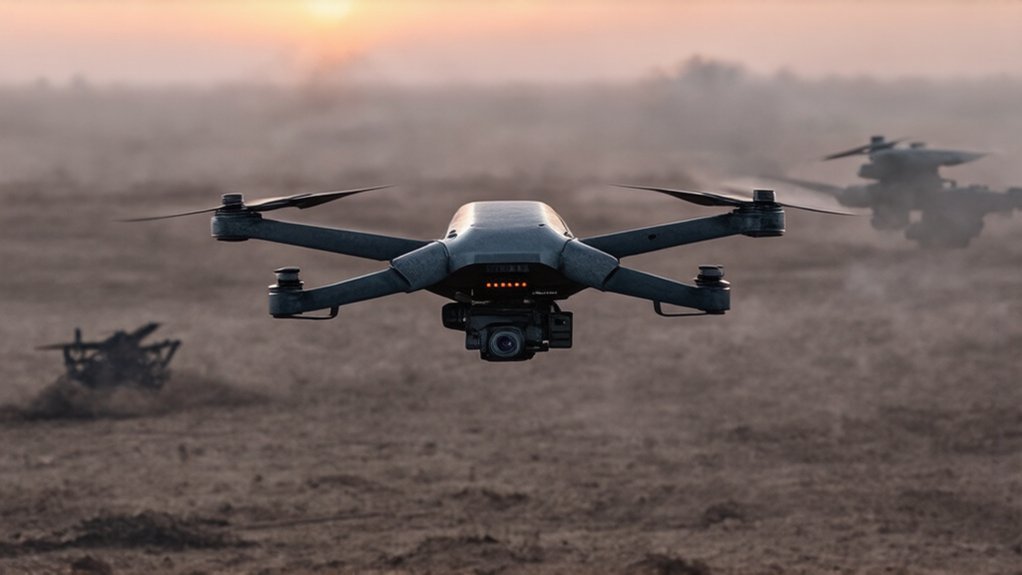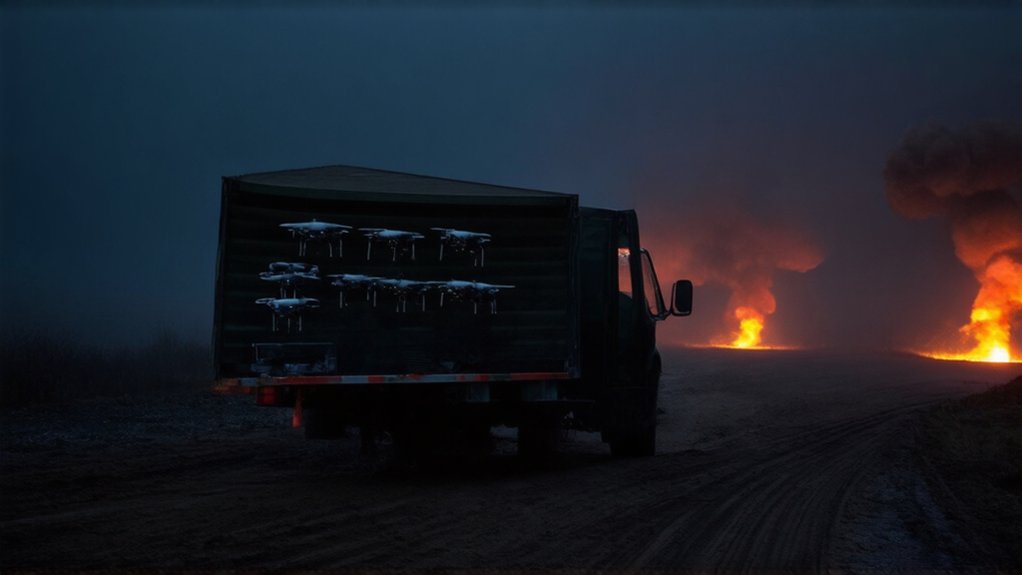Leaping, climbing, and even crawling upside-down—robot dogs are mastering skills that once seemed impossible without human programming. These mechanical canines aren’t just following coded commands anymore. They’re learning. Like real dogs, only with wires instead of treats.
Gone are the days of simple fetch routines—today’s robot pups learn parkour and handstands with digital kibble.
The secret? AI techniques like reinforcement learning. These algorithms reward robot dogs for moving forward efficiently, much like you’d praise a puppy for fetching. Only there’s no belly rubs, just cold, hard data points. Training happens primarily in simulations—because nobody has time to watch a robot dog fall down stairs a thousand times in real life.
MIT’s LucidSim represents the cutting edge of this approach. It generates completely synthetic environments with realistic textures and lighting. The system even uses ChatGPT prompts to create training scenarios. Traditional simulators struggle with recreating diverse environments, making LucidSim’s approach revolutionary for robot training. No real-world data needed. Zero. The robots learn everything in a digital dreamland before tackling actual concrete and grass.
And boy, do they learn. Today’s robot dogs navigate stairs, jump gaps, chase soccer balls, and even perform parkour maneuvers. Some can walk upside-down or roll over when knocked down. They’re reading gauges, checking if workers wear helmets, and patrolling industrial sites. Robots like Keyper have proven their worth by detecting gas leaks in industrial plants that would otherwise endanger human workers.
In performance tests, AI-trained robots absolutely crush their traditionally programmed counterparts—88% success rate versus a pathetic 15%.
Hardware plays a significant role. Cameras, LiDAR, and inertial measurement units feed these mechanical minds constant information. The Unitree Go2 boasts 4D ultra-wide LiDAR, giving it almost human-like environmental awareness. Almost.
Applications stretch from the practical to the far-fetched. Hazardous environment inspection? Check. Search and rescue? You bet. Mine clearing? Sure, why not. Some even suggest companionship roles, though a cold metal dog seems a poor substitute for fur and slobber.
Challenges remain. The “sim-to-real gap” means skills learned in perfect digital worlds often fail in messy reality. But progress continues. The goal? Animal-level agility in unstructured environments. Not there yet. But getting closer every day.


